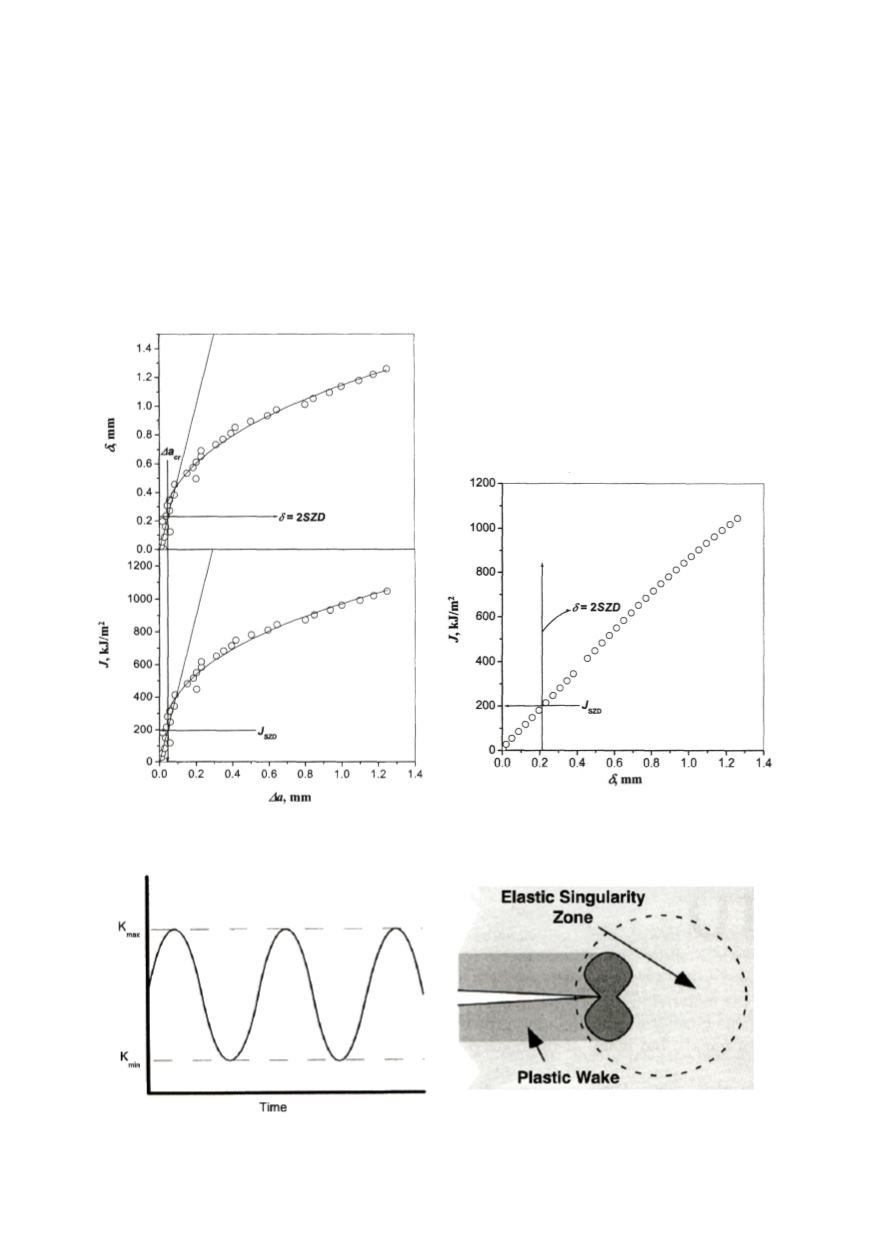

188
One mechanism proposed for striation formation during fatigue crack growth is
illustrated in Fig. 18. The crack tip blunts as the load increases, and an increment of crack
growth occurs as a result of the formation of a stretch zone. Local slip is concentrated at
45° from the crack plane. When the load decreases, the direction of slip is reverse, and
the crack tip folds inward. The process is repeated in subsequent cycles, and each cycle
produced a striation on the upper and lower crack faces. Width of striation depends on
fatigue crack growth rate in 7000 aluminium alloys with different content of (Fe+Si), Fig.
19. For the same
ΔK
, a greater striation spacing confirm the faster crack grow in the alloy
with maximum impurities content, Fig. 19.a
,
than in its high-purity versions, Fig. 19.b /9/.
a. First method
b. Second method
Figure 16. Determination of
J
SZD
from SZD /9/
Figure 17: Constant amplitude fatigue growth under small-scale yielding conditions


















